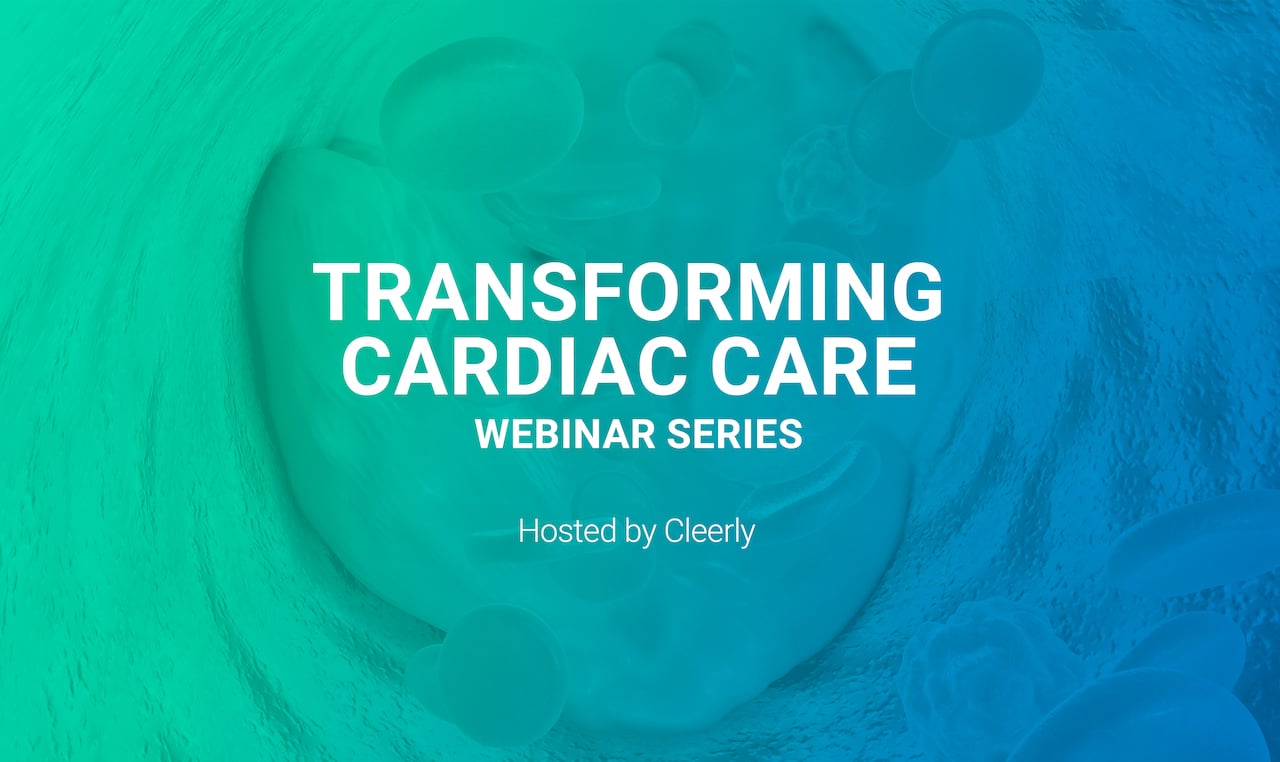The Recipe to a Healthy Heart:Your Guide to Preventing Heart Disease
Sure, the taste of food is important, but do you know how your diet impacts your heart? Many foods contain hidden ingredients that negatively impact...
2 min read
 James K. Min, MD, FACC, FESC, MSCCT, Founder & CEO of Cleerly
:
April 15, 2022
James K. Min, MD, FACC, FESC, MSCCT, Founder & CEO of Cleerly
:
April 15, 2022

New research proposes a four-stage system for measuring the progression of cardiovascular disease (CAD) based on atherosclerotic plaque - not secondary symptoms of heart disease.
Quantification of CAD burden and plaque type has demonstrated to be the strongest discriminant of future risk of Major Adverse Cardiac Events (MACE). Atherosclerotic plaque burden also strongly correlates to stenosis severity as well as ischemia.
When physicians give patients a cancer diagnosis, they provide two important pieces of information. One is a prognosis: The disease burden, impact on quality of life, and average life expectancy for someone at their stage of cancer progression. The other is a treatment plan, which could range from surgery to drug therapies to chemotherapies.
This disease prognosis and treatment plan comes from a staging system, which is based on how much cancer is in a patient’s body and where it’s located. It’s not just cancer, either – staging systems also exist for common chronic conditions such as hypertension, type 1 diabetes, type 2 diabetes, and asthma, based on a range of factors that determine how far each disease has progressed.
Notably absent from the list? Heart disease – the leading cause of death in the United States. Believe it or not, there’s no clinically relevant atherosclerosis staging system used to characterize the condition that affects nearly 20 million Americans overall and kills roughly 700,000 Americans every year.
Until now. Earlier this year, a paper in the Journal of Cardiovascular Computed Tomography proposed a four-stage system for the disease burden of atherosclerotic plaque, which is the direct cause of coronary artery disease (CAD).
The staging system describes patients based on either the total plaque volume or percent atheroma volume, which is the proportion of arterial walls occupied by plaque. Stages are defined as normal (no plaque), mild, moderate, and severe plaque.

The lack of a staging system for CAD to date has stemmed from the lack of a reliable way to measure and treat heart disease risk given the current standard of cardiovascular care. While there is a staging system for coronary calcium scoring, this is primarily used primarily to predict major, adverse clinical events – but not the progression of CAD itself.
As demonstrated in the paper, the use of coronary computed tomography angiography (CCTA) scanning makes it possible to quantify the atherosclerotic plaque burden. CCTA enables physicians to see not only how much plaque has built up, but also what type of plaque it is – whether it’s a non-calcified fatty plaque that is a strong predictor of heart attack risk or calcified stable plaque that can be protective against heart attacks.
Being able to measure plaque using CCTA technology is an important step in addressing CAD, but it’s just the beginning. The next step is developing a personalized and optimal treatment plan based on the disease burden. As with cancer and common chronic conditions, this plan varies based on the stage of disease progression – further emphasizing the importance of a staging system for CAD.
"Doctors typically don't treat you for CAD. Instead, they treat you for cholesterol and other secondary markers of the disease," said James Earls, M.D., Chief Medical Officer, Cleerly. "The goal of the staging system is to be able to stage disease progression based on the primary cause of CAD - plaque - and not the secondary causes, which has been the case for decades. This enables a new standard of cardiovascular care that allows doctors to provide the appropriate level of care to patients based on the severity of plaque."
For example, a doctor may decide to address early-stage CAD through lifestyle interventions or statin medication, as plaque buildup at that stage has not progressed enough to require a stent. Using the staging system, only patients with more advanced CAD would be referred for invasive procedures to address plaque buildup.
References:

Sure, the taste of food is important, but do you know how your diet impacts your heart? Many foods contain hidden ingredients that negatively impact...

As we reach the end of 2023 and yet another remarkable year at Cleerly, it’s a great opportunity to reflect on all we’ve accomplished and begin...

Cleerly has had a busy few months – attending conferences, panel sessions, and winning awards as we all work together to achieve our mission of a...

Findings from Cleerly's groundbreaking echo the recent American College of Cardiology guidelines on the use of CCTA for non-invasive heart disease...

There's a little-known fact in cardiology: Most of the care that's provided doesn't prevent heart attacks.

Historically, our diagnostic approaches to patients with suspected heart disease have been restricted to the evaluation of patients with symptoms...